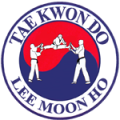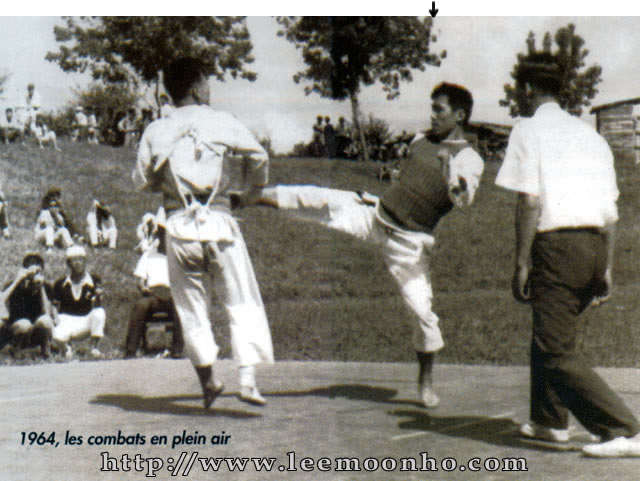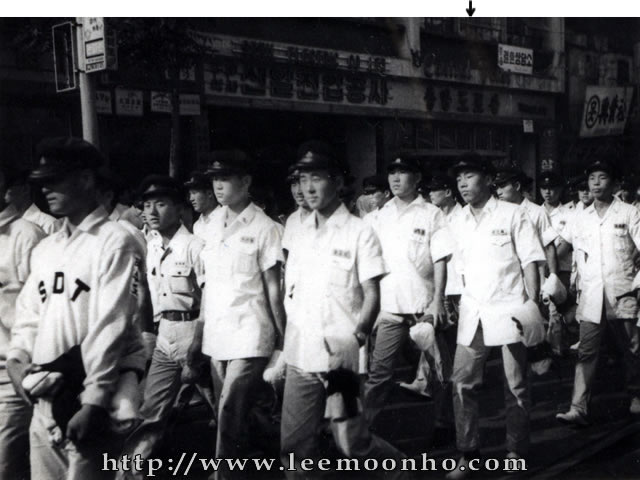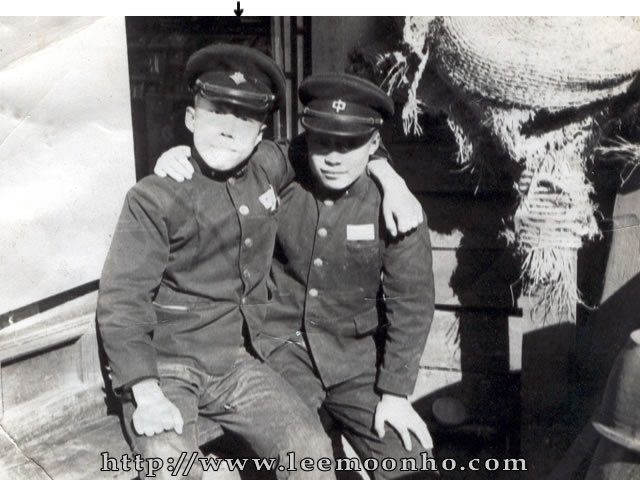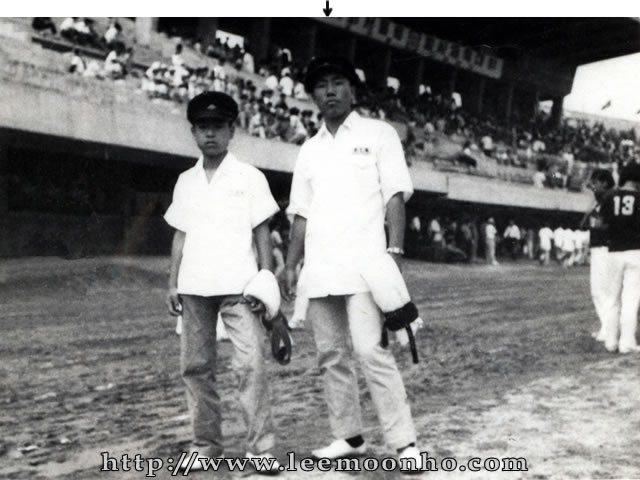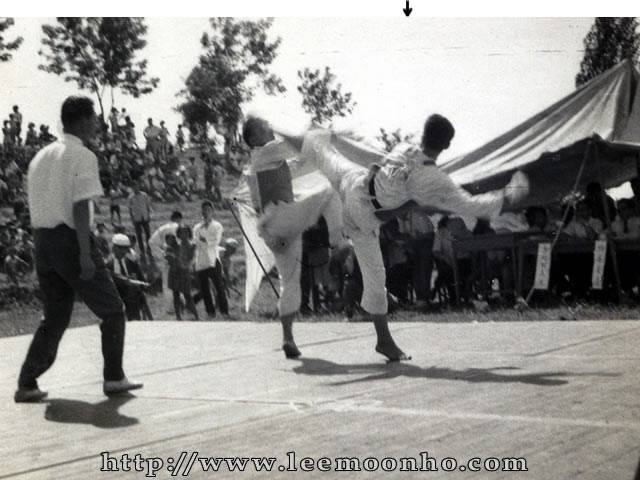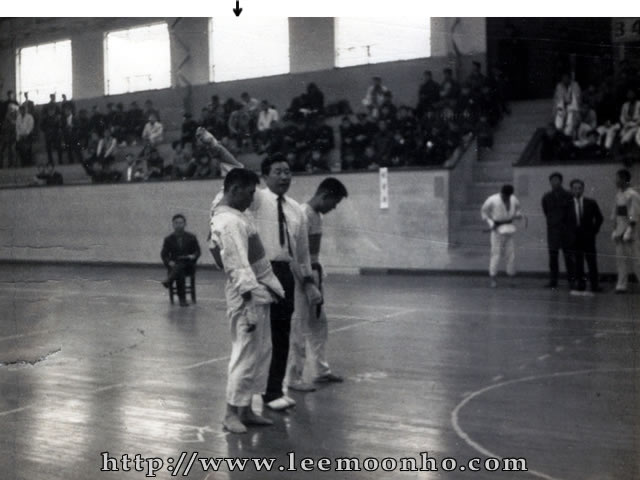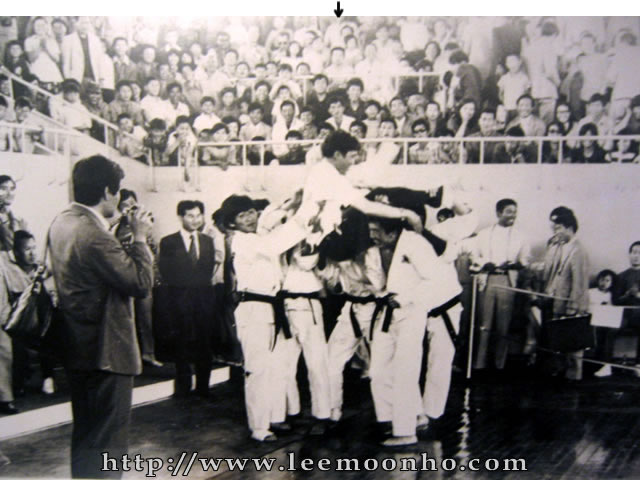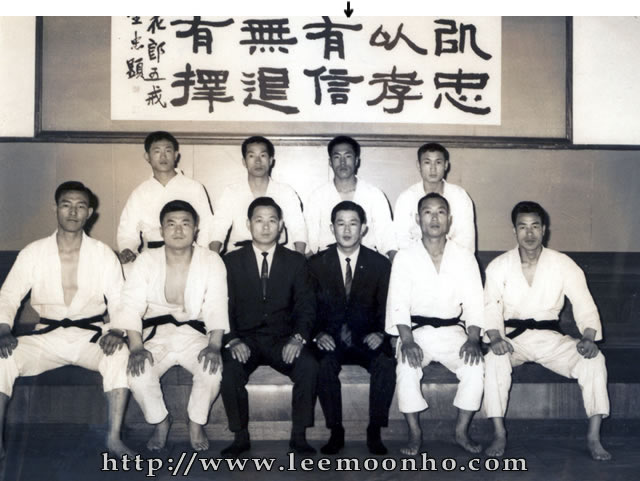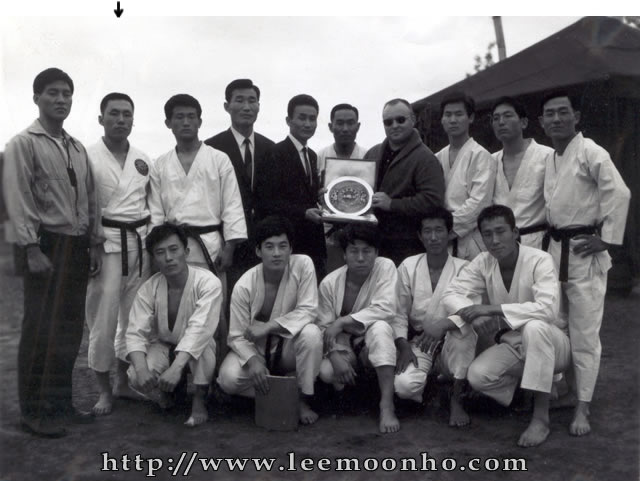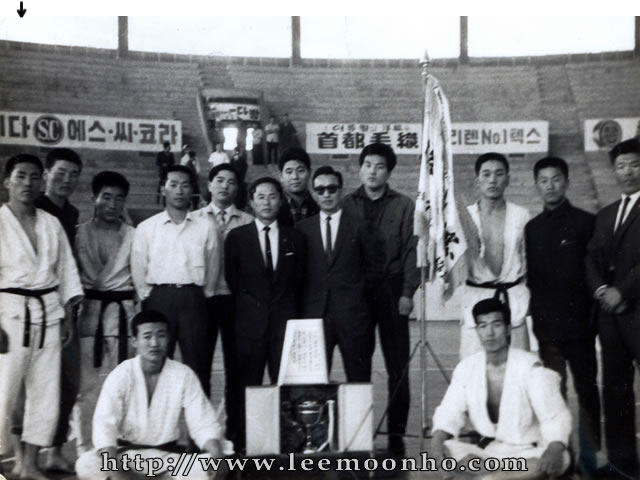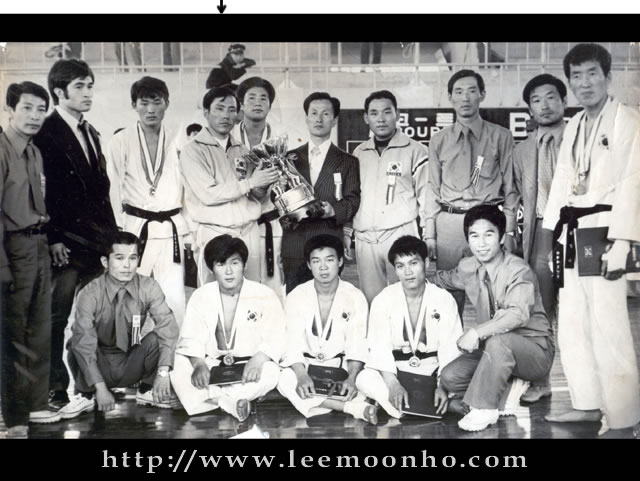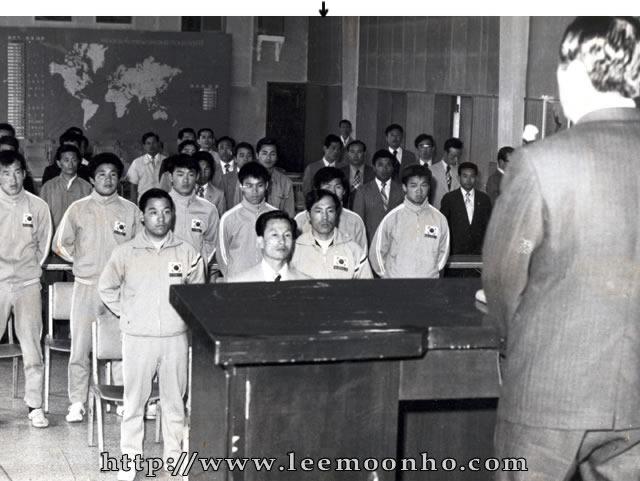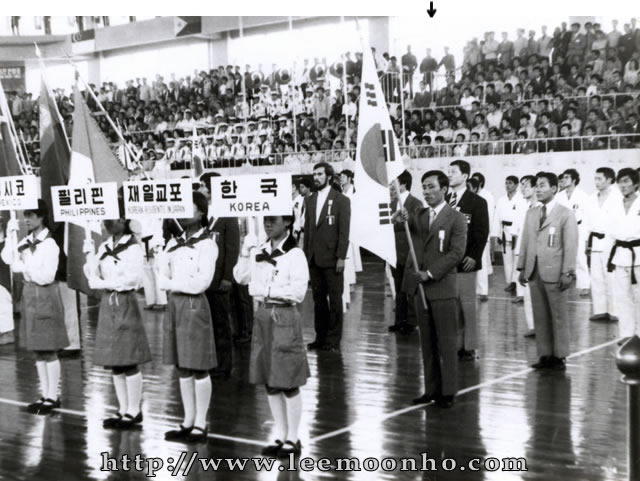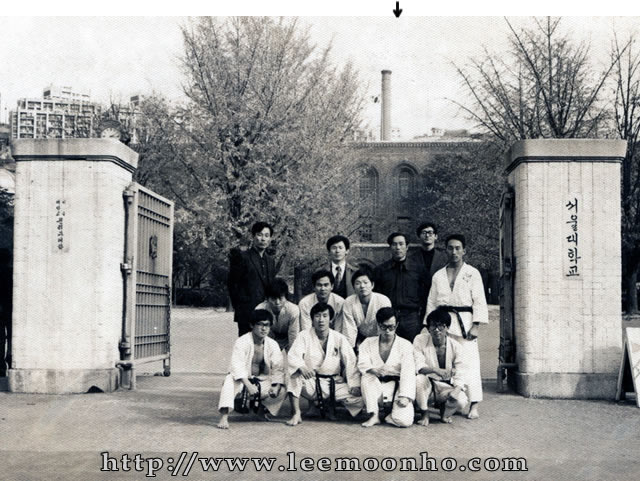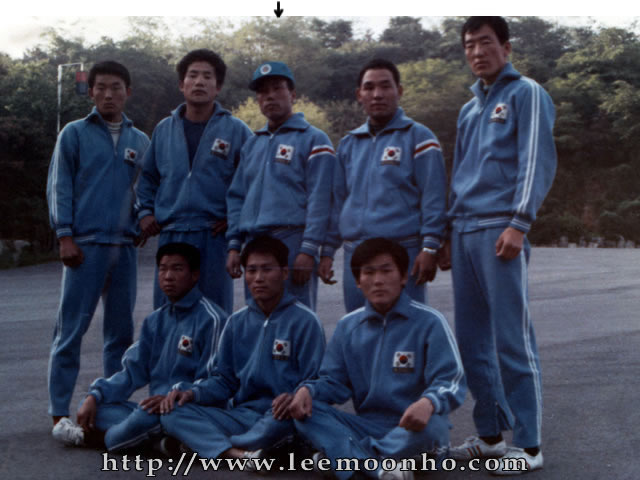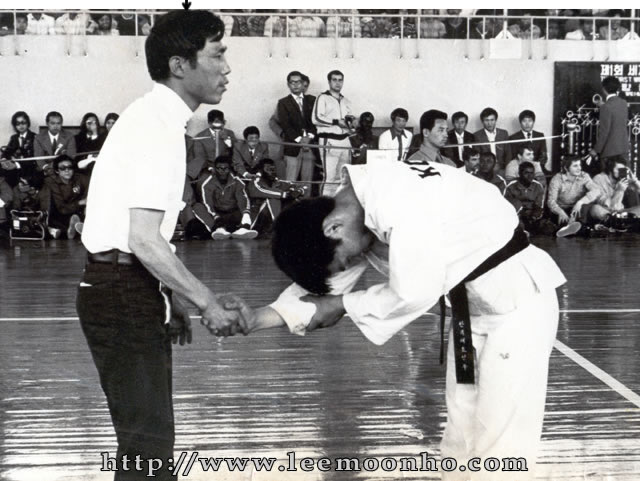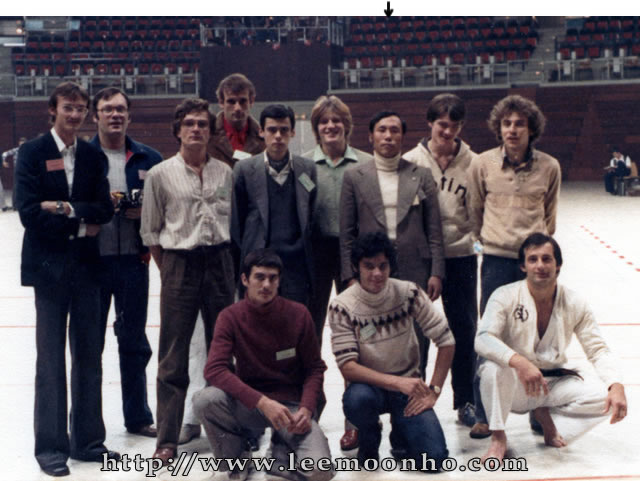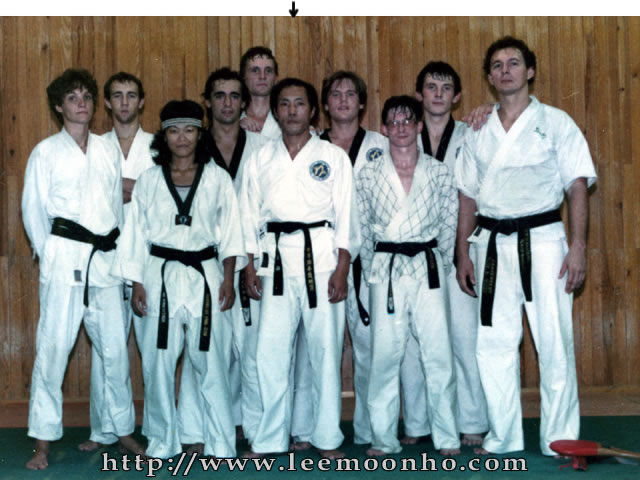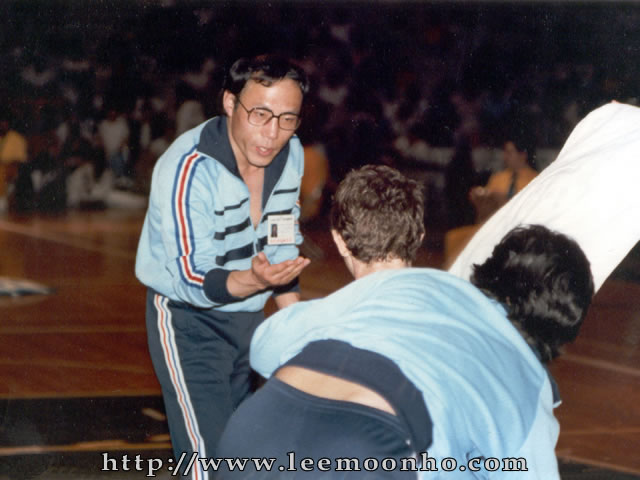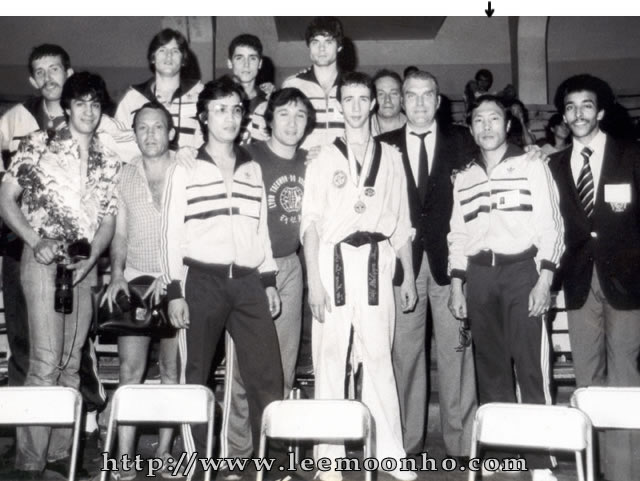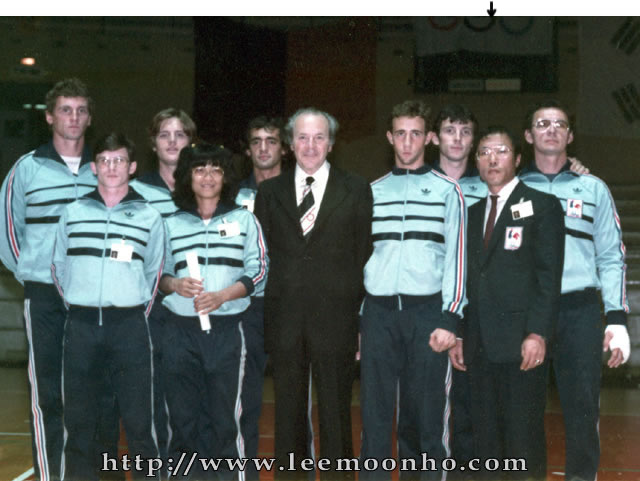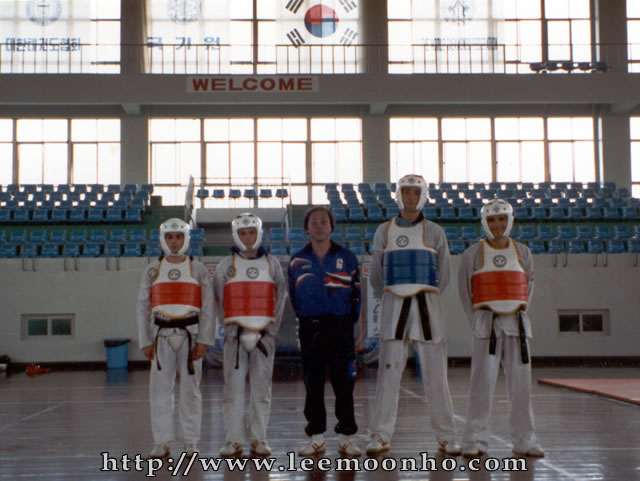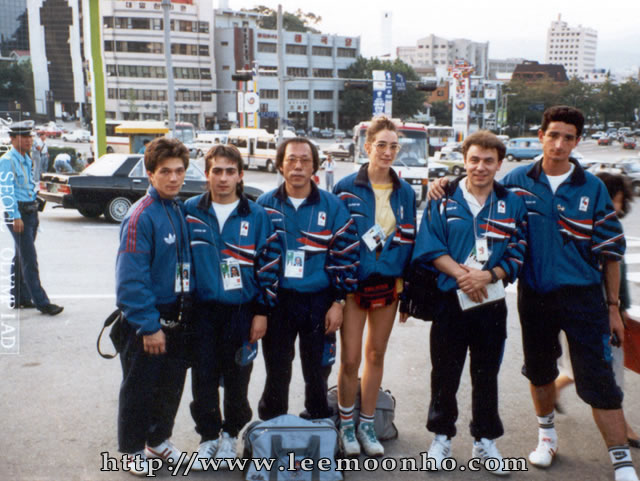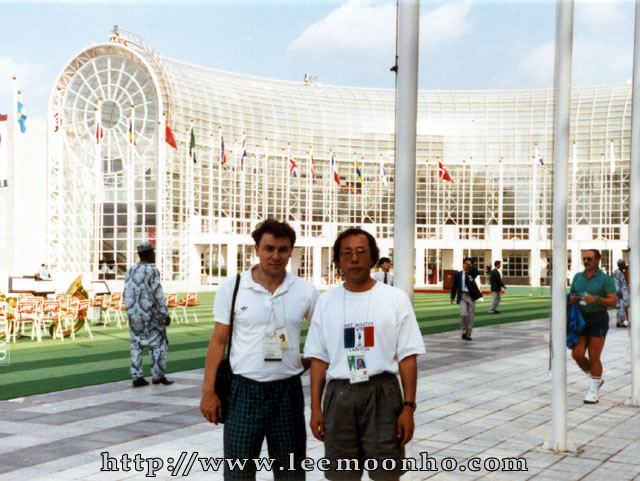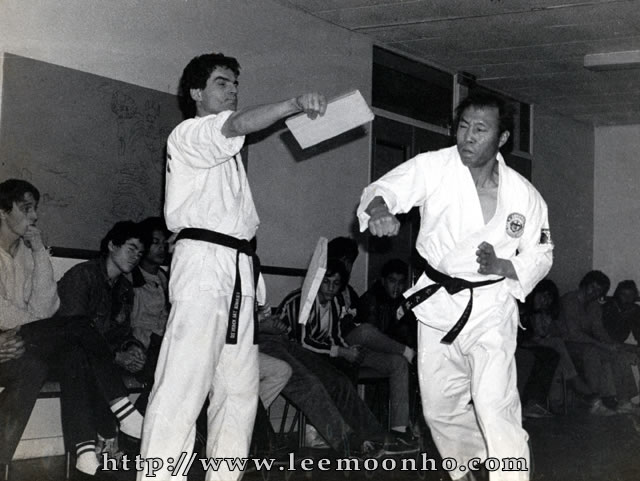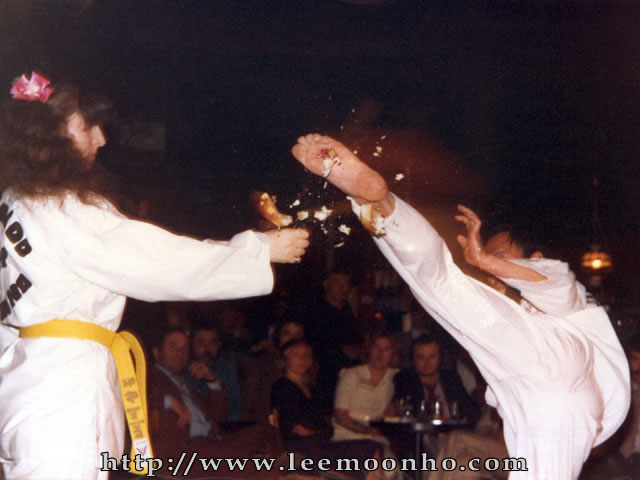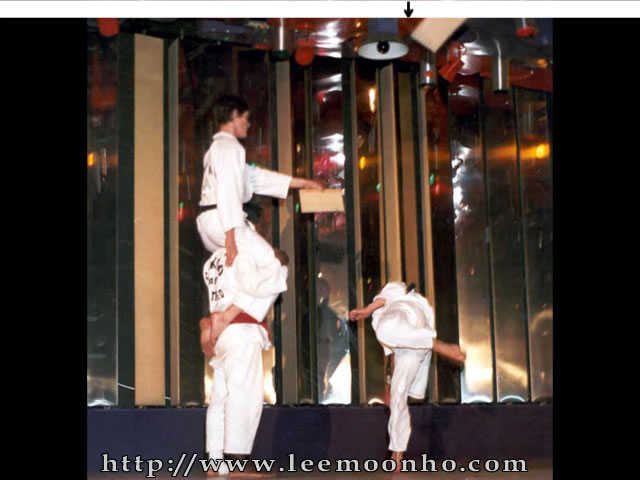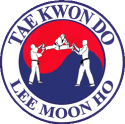It’s at this age that, as he was walking by the military stadium with his father, he saw a n exhibitio of what will become Tae Kwon Do… because the word Tae Kwon Do didn’t exist yet, the name will be given a few years later. He doesn’t know what kind of martial art it is but he is strongly impressed!… More over, he never dreamt that this discipline would become his life… It’s also in the very same stadium that, in 1988, Tae Kwon Do competitions are held for the first time as part of the Olympic Games, as a demonstration sport.
A few months after the exhibition, as Master Lee Moon-Ho registers for middle school, he discovers that the martial art he saw is called Tang Soo Do and he immediately selects this class. Teaching within school is different than in a Dojang, being more flexible on discipline.
Moreover, practicing in middle school, high school, and college allowed viewing different ways of teaching because there was a new teacher every year.
But when it came to rising to a higher-level belt, it was done the traditional way in front of masters at the Tae Kwon Do school of Chung Do Kwan.
In 1959, the headmaster of the school forbids the practice of this martial art because he thinks it is too dangerous. Master Lee Moon-Ho has to practice Judo and Hapkido in a dojang out of the school instead, but continued working by himself on his Tae Kwon Do. Actually, he works by himself up to 1961 when the interdiction is broken and thanks to a sport teacher, Tae Kwon Do is, once more, taught at school.
